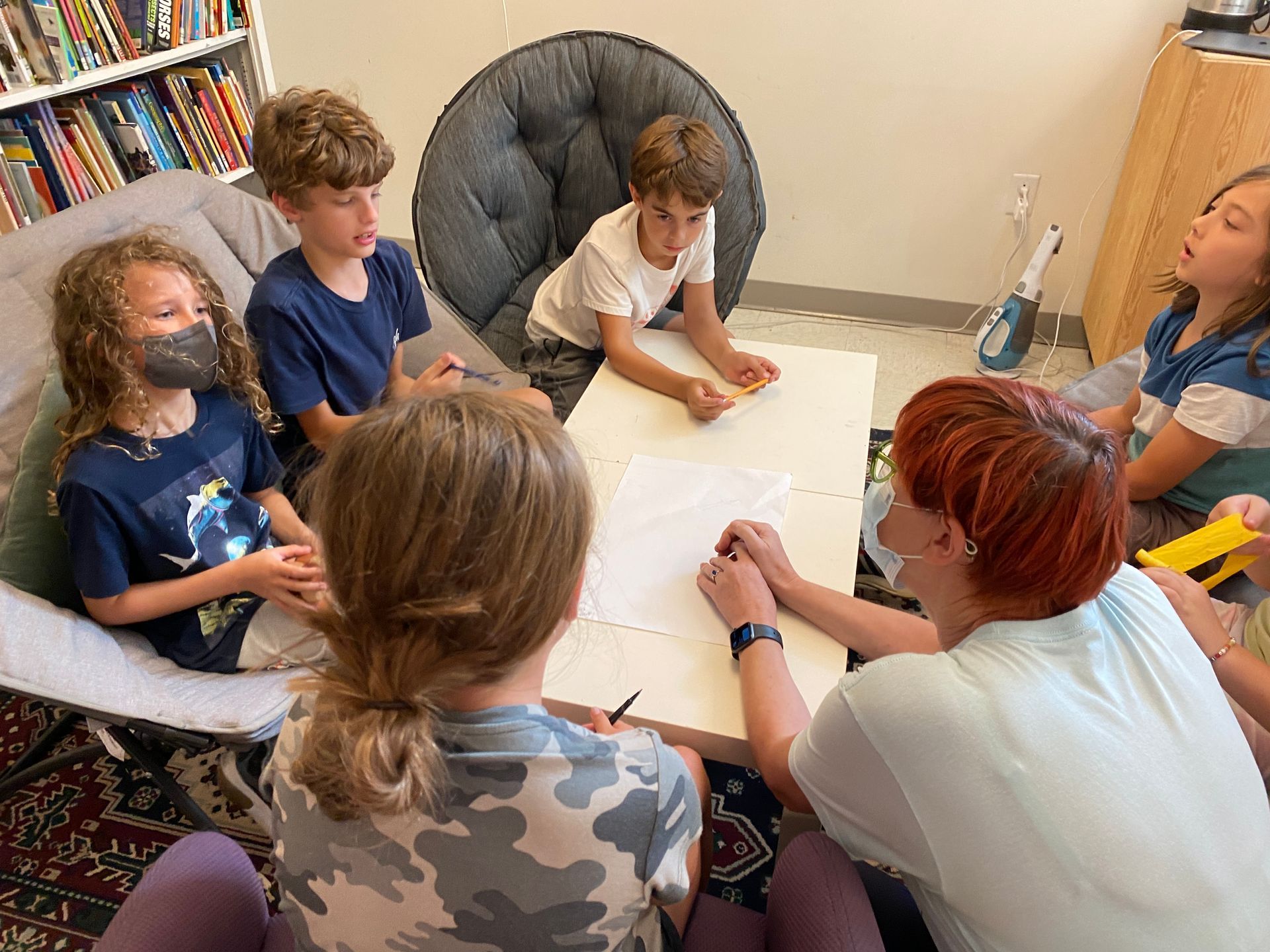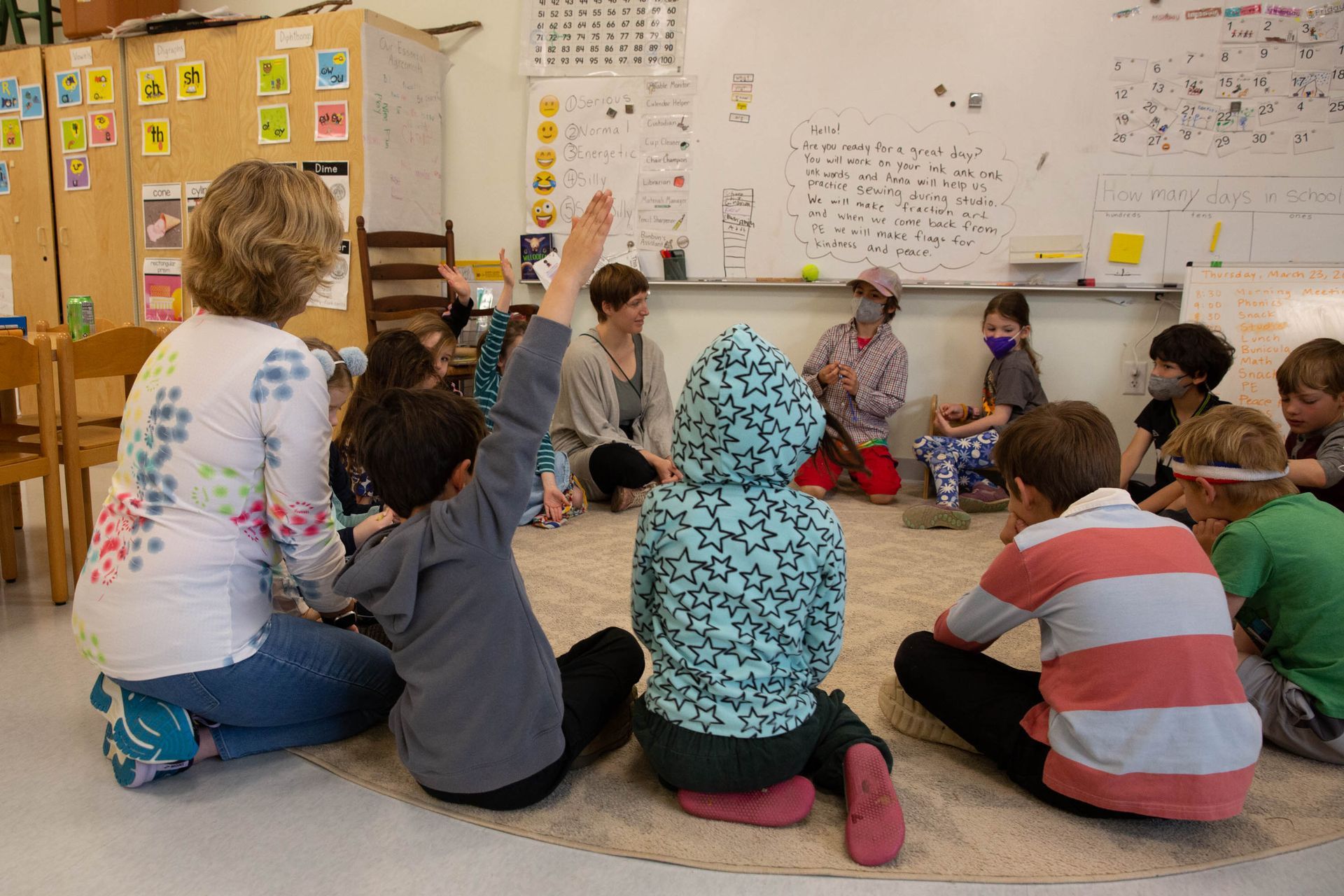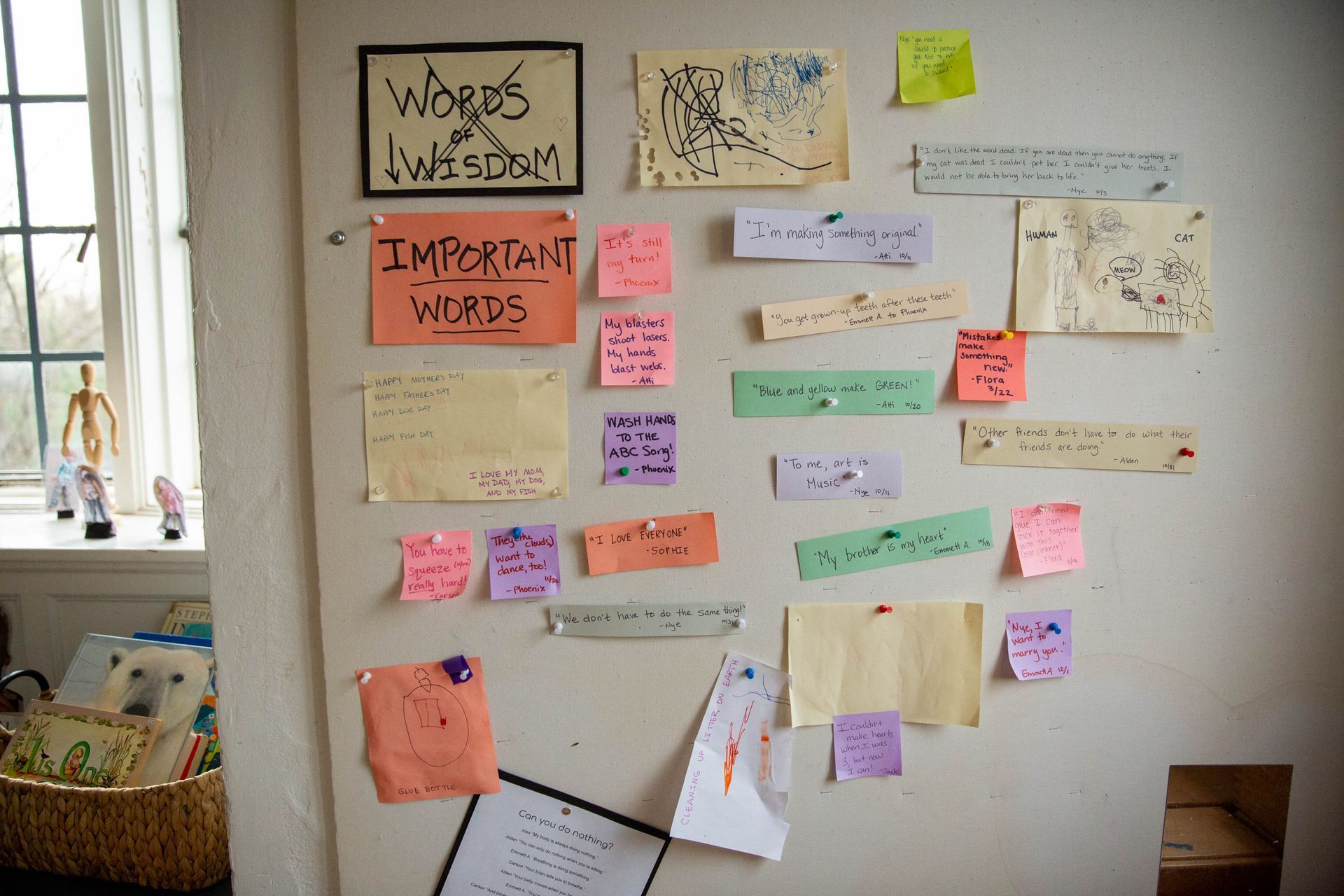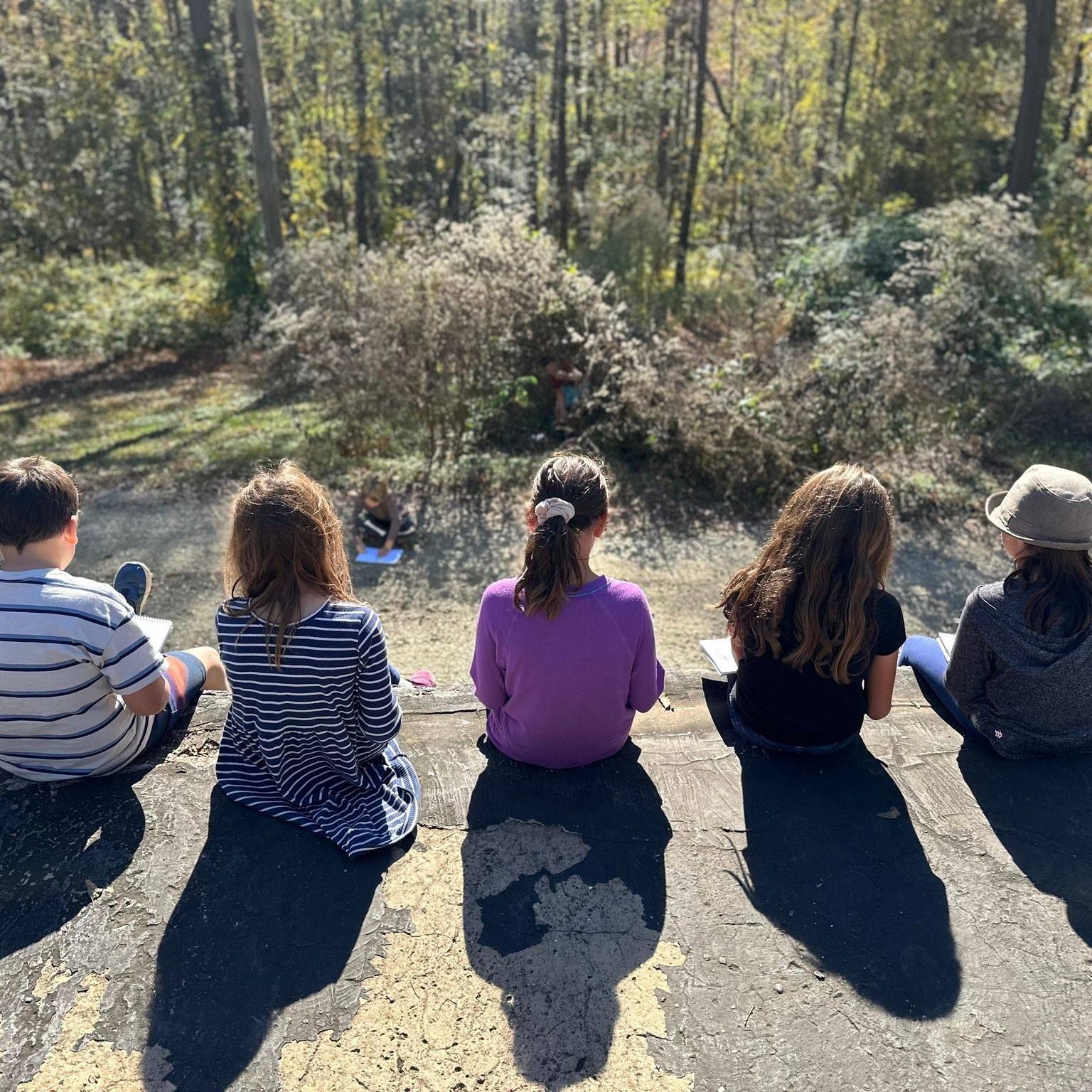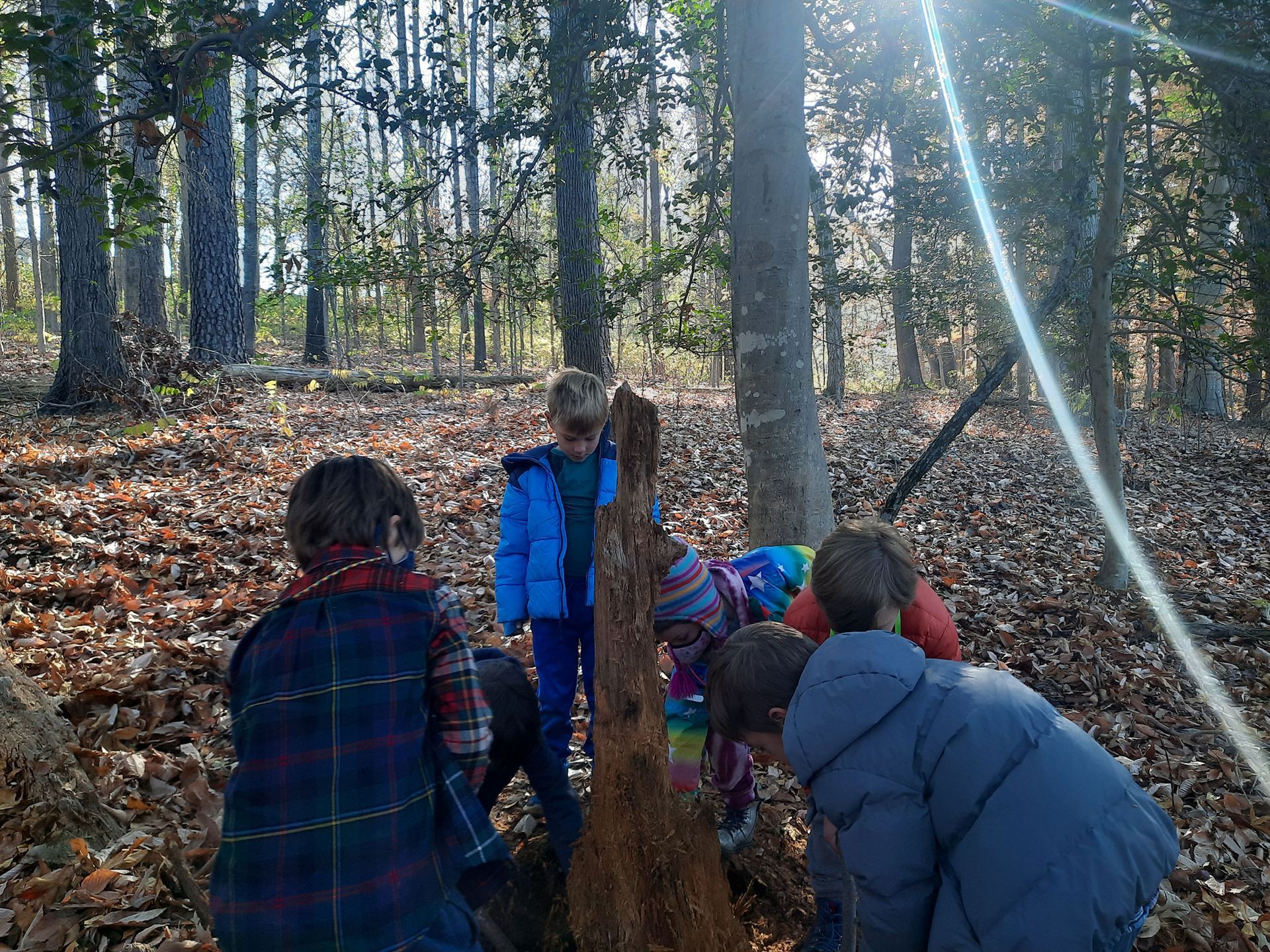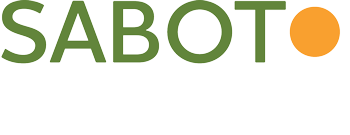

Our Approach
Sabot has a different approach to education, one that empowers the innate curiosity of every student. Through interactive experiences both in the classroom and throughout our wooded grounds, our students find joy in learning. We challenge them to be effective communicators, expansive thinkers, and eager problem solvers.
LEARN MORE BELOW
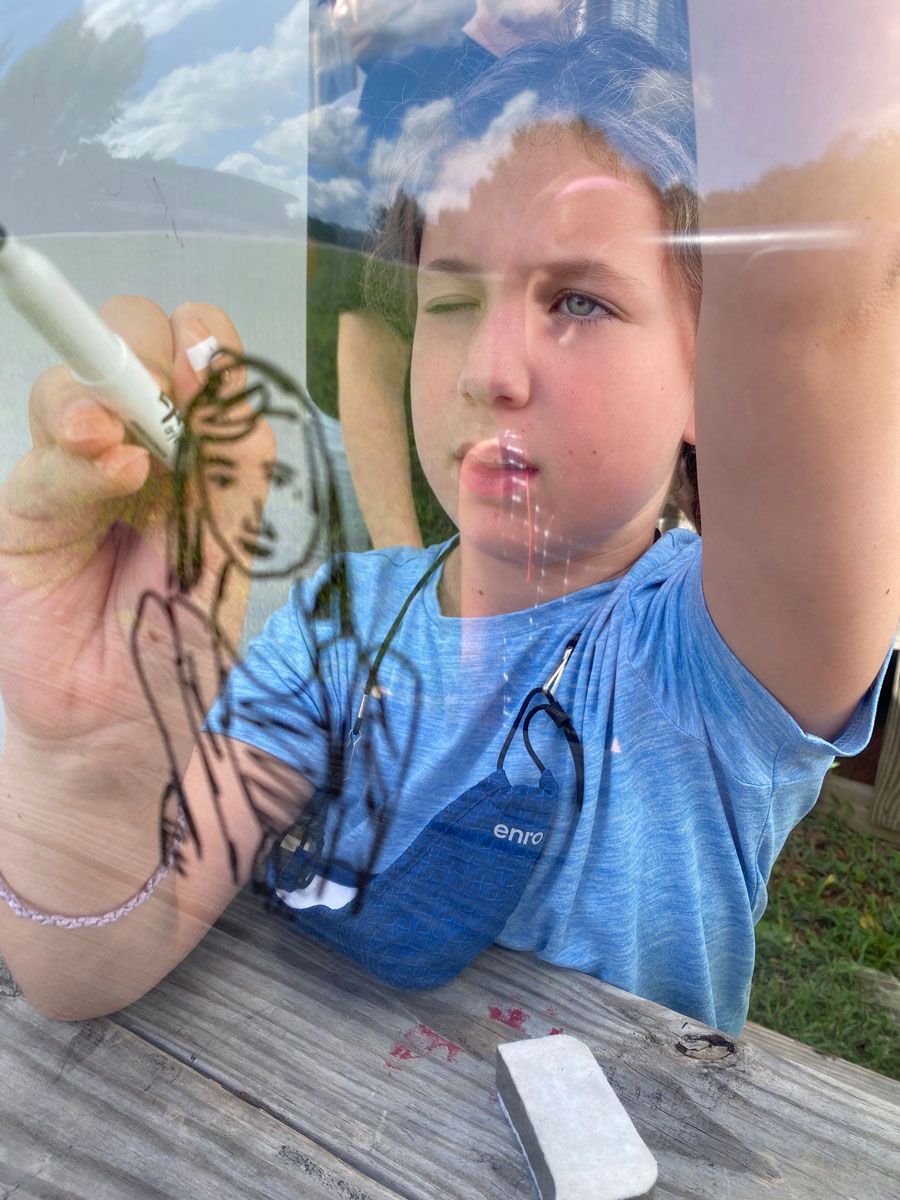
The Five Rs
Our Reggio-inspired approach for preschool through Grade 8 is unique to Richmond and is framed using the Sabot Five Rs – our educational framework and the foundation upon which our students build their learning and understanding, creativity, ideas, and wonder.
Research
Children have curious and open minds.
They will search for knowledge, deeper understanding, and new questions, creating powerful moments for learning.
Our students ask questions and actively seek answers. From preschool to 8th grade, we encourage our students to wonder and notice. They learn that there is no one resource for answers, but that many tools are useful for exploring problems and finding solutions – and that frequently, there is more than one way to solve a problem.
As they make observations; collect, analyze, and synthesize information; and draw conclusions, Sabot students develop lifelong problem-solving skills that can be applied anywhere. They quickly realize that learning has cycles, not endpoints.
Representation
Children have a hundred languages.
Students make their learning visible by expressing themselves through an infinite variety of media, materials, and modes. Whether they use clay, dance, video, or coding, students represent, analyze, problem-solve, and communicate in what Reggio teacher-researchers call “the hundred languages of children.” This metaphor describes the process of representing knowledge and learning, which leads to reflection, and then to further questions, and then to more investigation in an ongoing cycle of inquiry.
Reflection
Children think about their thinking.
At Sabot, students become aware of how their minds work and how they learn best. They discover which cognitive strategies help them do their best work. They learn which means of representation and expression come easily to them and which are more demanding. Their new ideas and perspectives transform into learning through this awareness, curiosity, creativity, and imagination.
Children who know their own strengths and weaknesses, who are challenged to assess their own work, and who are comfortable asking for help when they need it will be more effective learners. They will also be more equipped and better able to adapt to new challenges in the future.
Reach
Children seek continuous improvement.
They are willing to take responsible personal and intellectual risks and recognize the role of embracing challenge and sustaining effort. At Sabot, students learn to approach this with the discipline, persistence, and patience required.
We do not regard “A” level work as a reason to stop working, improving, or thinking. We expect students to acquire knowledge because knowledge is necessary for learning and problem-solving, but it is not the extent of one’s learning. Students are expected to observe, evaluate, and refine their own work and learning. This process of supporting students in taking increasing responsibility for and ownership of their own learning begins in preschool and continues throughout the lower and middle schools.
Relationship
Children are part of a community at Sabot.
Their connections ignite their passion to collaborate, sustain their individualism within the group, and foster their commitment to knowledge and community.
Across the school, students build understanding by examining their existing ideas in light of new experiences and new information, discussing questions, and testing and refining theories in collaboration with other children and adults. This collaboration allows children to understand their own — and each other’s — unique talents. They will seek out those with mechanical skills when something is broken, those who can negotiate ably when conflicts arise, and those who love to dream when a big idea is needed. Students view each other as resources, realizing that what they can accomplish by working together far exceeds what they might accomplish individually.
Check out the blog posts below to learn more about the ways Sabot puts Reggio theory into practice.
Contact Us
3400 Stony Point Road
Richmond, Virginia 23235
p (804) 272-1341
f (804) 560-9255

